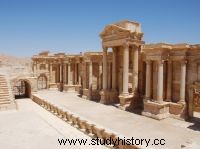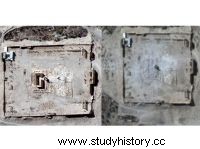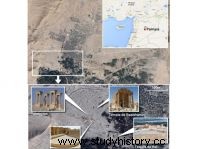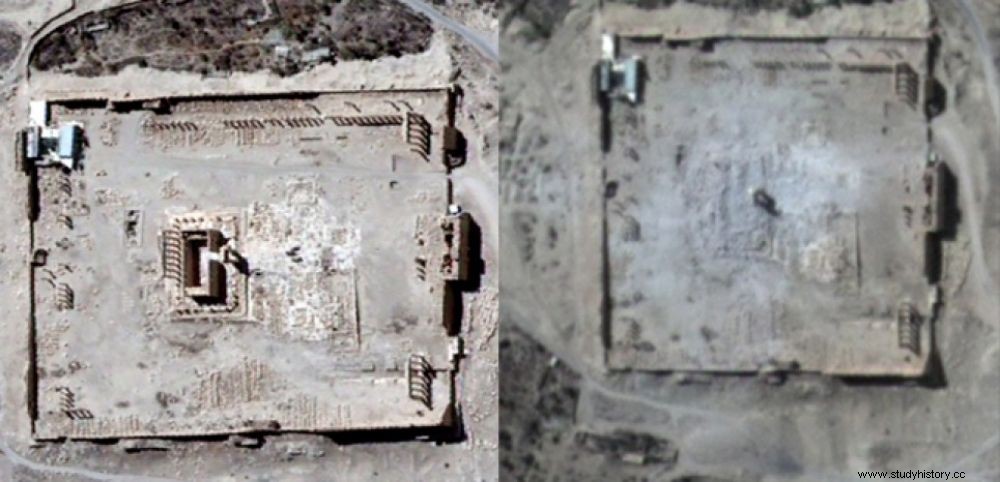 The destruction of the main temple of Palmyra on August 30, 2015:the proof by satellite images.
The destruction of the main temple of Palmyra on August 30, 2015:the proof by satellite images. Barely a week after the blasting of the temple of Baalshamin, in Palmyra, the jihadists of Daesh (IS) destroyed on Sunday August 30, 2015 the temple of Bel, one of the most famous monuments of the ancient caravan city of the Syrian desert. (Note that the temple in question here is indeed that of Bêl, not of Baal, as some media incorrectly call it. Bêl is not the "Anglo-Saxon" spelling but the ancient name, as evidenced by number of Latin, Greek or Aramaic texts, as confirmed to Sciences et Avenir by the orientalist epigraphist Jean-Baptiste Yon). On August 31, 2015, the Syrian Observatory for Human Rights (OSDH) based in England, which cites local sources, did not yet know the extent of the damage inflicted on this World Heritage site considered to be the most important "religious building of the first century of our era in the Middle East ". We know, this September 1st, that there is nothing left.
Erected in AD 32, this monument dedicated to the god Ba'al*, an autochthonous sun deity protector of the city, was, with its large colonnades, one of the most emblematic and best preserved monuments in Palmyra. After the destruction of the Baalshamin temple on August 23, the Director General of UNESCO, Irina Bokova had already denounced "a war crime and a considerable loss for the Syrian people and humanity ". With that of the temple of Bêl, a new crime has just been perpetrated.
Since its arrival in Syria in the wake of the civil war, the ultra-fundamentalist organization has committed numerous abuses against populations and heritage.
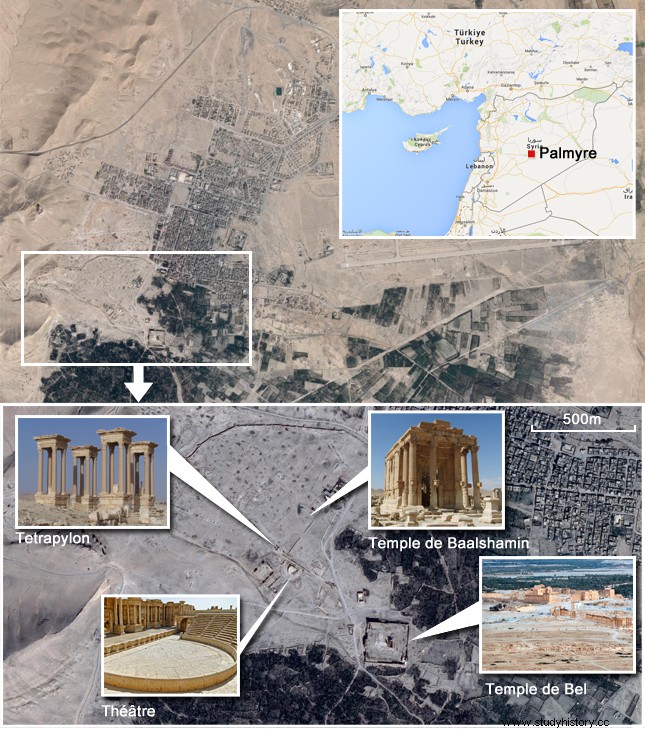
Credit:Google Maps
* Bêl is the same word as Baal:it originally means "master" in the Semitic languages. But Bêl is the Mesopotamian version. It is the name of the great god of Babylon, Bel Marduk. "Which proves that in Palmyra, as in Apamea or elsewhere in Syria, there is a strong Mesopotamian influence" comments the archaeologist of the Maison de l'Orient et de la Méditerranée Jean-Baptiste Yon.
The city of Palmyra in Syria

